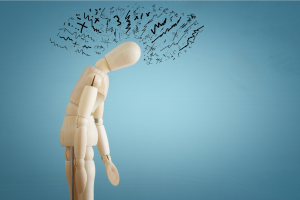Recognizing Complex Trauma

Treating trauma is a task most therapists can expect to undertake in their career. In today’s social and political climate, in which soldiers are continually being deployed to war zones and the recent recession has been linked to an increase in child abuse, we can anticipate that many cases of complex trauma are sure to arise. Complex trauma is described by psychologist and trauma expert Dr. Christine Courtois, as “a type of trauma that occurs repeatedly and cumulatively, usually over a period of time and within specific relationships and contexts.” Examples include severe child abuse, domestic abuse, or multiple military deployments into dangerous locales.
In Dr. Courtois article, “Understanding Complex Trauma, Complex Reactions, and Treatment Approaches” she summarizes complex traumatic events and experiences as stressors that are:
(1) repetitive, prolonged, or cumulative (2 ) most often interpersonal, involving direct harm, exploitation, and maltreatment including neglect/abandonment/antipathy by primary caregivers or other ostensibly responsible adults, and (3) often occur at developmentally vulnerable times in the victim’s life, especially in early childhood or adolescence, but can also occur later in life and in conditions of vulnerability associated with disability/ disempowerment/dependency/age /infirmity, and so on.
The nature, diagnosis, and treatment of this condition can be controversial, as exemplified through the current debate that’s risen over adding the disorder to the forthcoming fifth edition of the Diagnostic and Statistical Manual of Mental Disorders (DSM-V). Yet, the value of familiarizing ourselves with the nature of complex trauma is immeasurable, especially when it results in getting people who are suffering to the help they need. Educating ourselves on the after-effects of trauma not only proves valuable to those of us in the field of mental health but to friends and family members of individuals who struggle with this disorder.
For the men and women afflicted with complex trauma, it’s important to understand and recognize the ways they have been impacted by their experience. It is essential for them to understand that their symptoms come from somewhere, so they can have compassion for themselves, and to know that there are treatments available that can be life changing. While the goal of this brief introduction is not to provide a manual from which to diagnose complex trauma, my hope is it will raise awareness of its symptoms and help to direct these people toward a path to recovery.
On September 24, I will host the CE Webinar, “Complex Forms of Post-Traumatic Stress Disorder” with Dr. Courtois. In her article “Complex Trauma, Complex Reactions: Assessment and Treatment” she lists symptoms of complex PTSD as including difficulty regulating affective impulses such as anger and self-destructiveness, dissociative episodes, a chronic sense of guilt or responsibility, difficulty trusting people or feeling intimate, hopelessness or despair, and other somatic or medical problems.
Individuals who have been traumatized repeatedly over a period of time or within specific settings and scenarios are vulnerable to many of these emotional struggles. Children who are abused, for example, are even more prone to disassociation than adults. Child abuse often occurs repeatedly in a context in which the victim depends on their attacker for survival. When someone we’re supposed to trust inflicts trauma or deep emotional pain onto us, our defense may be to mentally disconnect from our own bodies. Children with memories of physical, sexual, or even intense verbal abuse, sometimes remember the scene as if they’d watched it take place from above, as if it wasn’t even happening to them. In many cases, they may even experience amnesia or not remember certain painful events at all.
Incidents of trauma, whether they occurred in a childhood home, a warzone, or a POW cell can incite guilt in those impacted. Traumatized individuals may experience an altered self-perception in which they suffer with feelings of intense shame. They may experience severe guilt, believing it is somehow they’re fault that certain terrorizing events took place.
One painful identification people make when they are victims of abuse occurs when they internalize their aggressor. In other words, they may start to identify with the person who hurt them the most, sometimes feeling protective or taking on their destructive point of view toward themselves. I often discuss the concept of the “critical inner voice,” a term my father Robert Firestone, Ph.D. and I use to describe a negative self-perception we carry with us in our minds. All of us possess this inner critic, but those of us who are traumatized may experience this “voice” as a deeply destructive and terrifying enemy whose attacks on us can feel crippling and constant and can lead to even life-threatening self-destructive behavior. When a person feels hopeless or isolated in their suffering or finds it difficult to trust easily, he or she can become further victimized by their critical inner voice. In turn, they may fail to have compassion for themselves and may make choices that repeat destructive patterns of their past. For instance, an abused child may wind up in an abusive relationship as an adult.
It is essential for victims of trauma to find ways to differentiate from the negative programming they’ve received in moments of stress. In order to do so, they must be able to feel compassion for themselves and the intense emotional anguish they’ve endured. Complex trauma requires complex and sequenced treatment, which involves multiple components that target the different symptoms that arise on the road to recovery. The good news is that treatment is available, and research is helping to inform the development and implementation of cutting-edge treatments. Dr. Courtois is an expert in these methodologies and will discuss her work and research findings in our upcoming Webinar. The message to take away from the work of mental health professionals like Dr. Courtois and her colleagues is that, no one should feel hopeless. Help is available, even for those who have survived the most excruciating of conditions. Everyone deserves to be reached out to and steered through even their darkest of times.
2 Comments
Leave a Reply
You must be logged in to post a comment.










Thank Dr. Firestone for bringing attention to C-PTSD. As a survivor of severe child abuse I have rebuilt my life managing my major depression, C-PTSD, DID and depersonalization. Conversations That Heal was created to bring awareness to the healing path all survivors of childhood trauma take. Education of all kinds is essential to remove the shame and allow the healing journey to begin. My weekly radio show, CTHRadio, 1150KKNW.com is another tool that adds to your message. I believe our society can heal from child abuse. It takes one small step from all of us to make the journey.
“Traumatized individuals … may experience severe guilt, believing it is somehow they’re fault that certain terrorizing events took place.” One thing I have seen is a pattern of guilt that attaches itself inappropriately to current circumstances, even while the traumatized person may not consciously associate guilt with the traumatizing incidents. I wonder how common you would say this is?